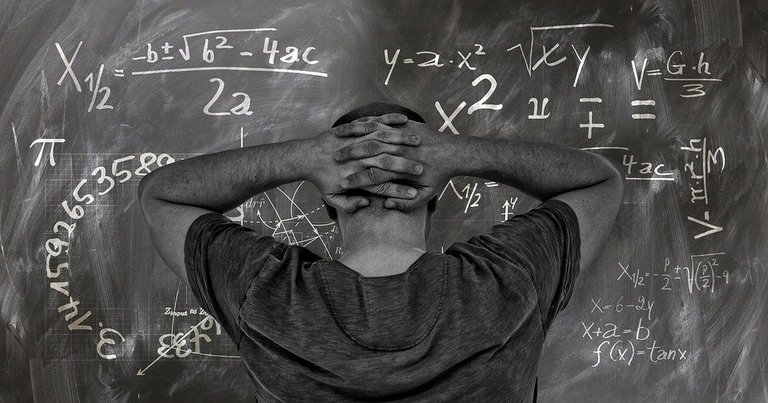Hypergeometric Distribution [Probability]
Hi there. In this math post, I cover the hypergeometric distribution from probability.
Math text & symbols rendered with Quicklatex.com.

Topics
- Review Of Combinations
- Hypergeometric Distribution
- Examples
Review Of Combinations
In the math version of combinations, it is referred to how many ways k items can be selected out of a larger pool of n choices. With math notation, it is defined as:

Note that the factorial k! is defined as:  for k 1 or greater. Zero factorial
for k 1 or greater. Zero factorial 0! is defined to be equal to just 1.
Example One
There are 5 pizza slice options at the local pizza place. John wants 2 different pizza slices from the 5. How many ways can John select 2 different slices from the 5 choices?

There are 10 ways to choose 2 different slices from 5 choices. On a calculator, use 5C2. You may need the second function or SHIFT part on the calculator to access the choose function.
Example Two
Billy wants to have 4 teammates for a quick game of Counter Strike against another 5 man team. He has 7 people to choose from. How many different ways can Billy choose 4 from 7 candidates? Note that order does not matter here.

There are 35 ways of choosing 4 teammates from 7 candidates. If you have a calculator you can do 7C4.

Hypergeometric Distribution
Consider two groups where the first group has X many choices and the second group has Y many choices. You want to choose x items or people from X many choices in the first group. Also, you want to choose yitems/people from the second Y group.
The probability of choosing x items from X choices and choosing y items from Y choices is as follows:

The denominator is the amount of ways you can choose x+y from X + Y options. Note that X + Y many options represent all the choices available.
This formula will make more sense through some examples.

Examples
Example One
There are 5 men and 3 women as candidates. What is the probability of choosing 3 men and 1 woman in a 4 person committee?
The number of ways of choosing 3 men from 5 is 5 choose 3 which is equal to 10 ways.
Choosing one woman from 3 women is 3 choose 1 or 3 ways.
Multiplying 10 and 3 gives the numerator of 30.
The denominator is the 8 candidates choosing 4 people for the committee. This is 8 choose 4 which is equal to 70.
The probability of choosing 3 men and 1 woman for the 4 person committee is 30/70 or 3/7 which is approximately 42.86%.
Here are the calculations:

Example Two
You have a standard deck of 52 cards. There are 13 cards for each suit. You draw 5 cards from the 52 card without replacement. What is the probability of all 5 cards being hearts (flush)?
Start with the denominator. It is 52 cards choose 5. Computing 52 choose 5 on the calculator gives 2,598,960 ways of choosing 5 cards from 52 cards.
For the numerator there are two things to consider. For the hearts, consider selecting 5 hearts out of a possible 13. This is 13 choose 5 which is 1287 ways. As the 5 cards are all hearts, you have 39 cards that are not hearts and you choose none of these 39 in the selected 5 cards. There is only way to choose no cards from 39.
Altogether the probability of all 5 selected cards being hearts is as follows:


Posted with STEMGeeks
I realy like your examples, it got me thinking on how to express the first example as the probability if atleast 1 woman elected. Presumably 1 -P(0), in much the same way as you qould for the standard binomial model?
Yes. You can do the complement method as you described @notak. It is 1 - Prob(4 men, no women selected) or 1 - Prob(Less than 1 woman in committee).
The complement method (1 minus way) is nice so you do not have to add all the cases where you have 1W3M, 2W2M and 3W1M. This complement method works with any probability distribution (discrete or continuous with integrals). Not just binomial.
This is a clear explanation with good examples. I am teaching finite math to some high school students this year and we are doing combinatorics right now. !BEER
View or trade
BEER.Hey @dkmathstats, here is a little bit of
BEERfrom @fiberfrau for you. Enjoy it!Learn how to earn FREE BEER each day by staking your
BEER.